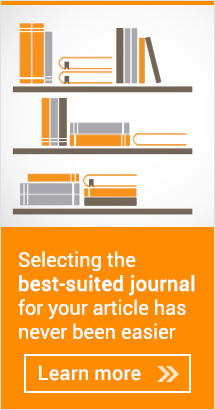Predatory Publishing: Top 10 Things You Need to Know
December 2017
Author
Gale A. Oren, MILS
Librarian, John W. Henderson Library, Kellogg Eye Center, University of Michigan
Open access vs. predatory journals
Many open access journals are legitimate and reputable, and offer authors the means for maintaining copyright (right to distribute, etc.) over their own work. Those considered to be "predatory" are merely pay-to-publish websites that exploit researchers and ultimately reduce the credibility of published research.
Why are predatory journals on the rise?
- Profitability for the predatory publishers
- Author confusion as to which journals are reputable
- Authors unaware of the harm caused by supporting this predatory industry
- Demise of "Beall’s List" (2009–2016), a predatory journal blacklist that many relied upon for guidance
Obvious signs of predatory journals
- Heavy solicitation of authors and editorial board members via email
- Poor grammar, spelling, and punctuation on website and/or in emails
- Journal titles similar to well-known reputable journals
- Expedited peer review offered
- Information about author fees, editorial policies, peer-review etc. not clearly stated
- No verifiable contact information provided, including mailing address
- Suspicious nature and quality of articles already published
Covert signs of predatory journals
- Author fee charged before peer review, or author fee not mentioned at all
- Unknown or unwilling editorial board members listed
- Bogus impact factor
- No response to emails once author fee is submitted
National Institutes of Health (NIH) position
Ensuring the credibility of NIH funded research is important to maintaining public trust in research.1,2
Federal Trade Commission (FTC) position
The FTC brought a lawsuit against OMICS, a publisher based in India who went from 10 journals to over 700 in the past 8 years, claiming that publishing fees are not revealed prior to manuscript submission. Following submission, authors allegedly are not allowed to withdraw their manuscripts, making it impossible for publication in other journals, forcing them to pay the fees. The FTC’s injunction was granted.3-5
What you can do
It can sometimes be difficult to distinguish between reputable publishers and unscrupulous ones. For example, some legitimate publishers may solicit articles or editorials. Also, the practice of charging for publication is an accepted open access business model, offering benefits to both authors and readers.
A few resources to help you:
- Think. Check. Submit. (recommended by the NIH)
- Verify the title on one of the "White Lists" listed below
- Contact your librarian
Reliable, vetted "White Lists"
Predatory conference invitations
Sadly, a similar predatory model for conferences has been unleashed, where the only goal is to profit from the attendees. The main selection criterion for speakers is their willingness to pay a fee. The event itself can be misrepresented and disorganized.6
For further reading
References
- Lauer M. Continuing steps to ensuring credibility of NIH research: Selecting journals with credible practices. NIH ExtraMural Nexus. November 8, 2017.
- National Institutes of Health. Statement on Article Publication Resulting from NIH Funded Research. Notice Number: NOT-OD-18-011. November 3, 2017.
- Federal Trade Commission. FTC charges academic journal publisher OMICS Group deceived researchers. August 26, 2016.
- Lake L. Academics and scientists: Beware of predatory journal publishers. Federal Trade Commission Consumer Information [Blog]. August 26, 2016.
- Zimmer K. U.S. court issues injunction against open-access publisher OMICS. The Scientist. November 27, 2017.
- Cobey KD, Costa e Silva M, Mazzarello S, et al. Is this conference for real? Navigating presumed predatory conference invitations. J Oncol Pract. 2017;13(7):410-3.
This article is repurposed from a library e-newsletter from the University of Michigan, Department of Ophthalmology and Visual Sciences.

 Back to Author Resource Review
Back to Author Resource Review